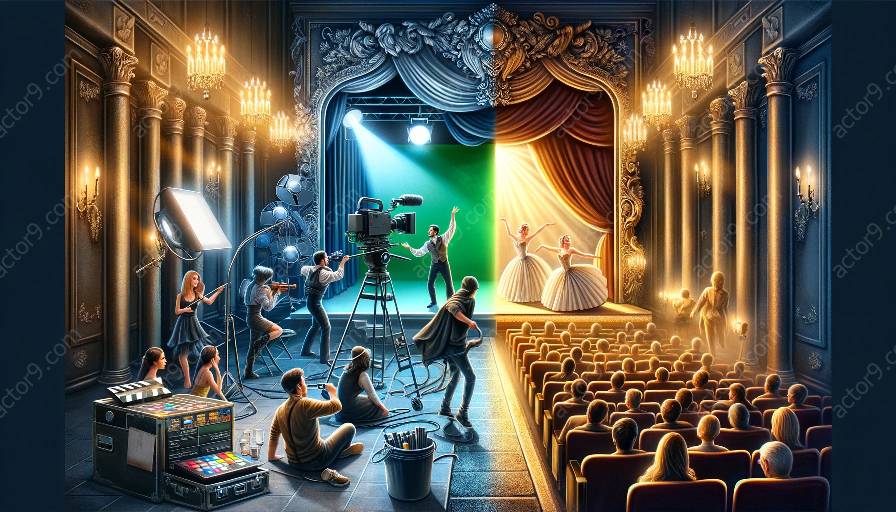Acting is an art form that requires the actor to convey emotions effectively to the audience. Whether in film or on stage, actors use their physicality to communicate the inner world of their characters. However, the way physicality is manipulated differs between film and stage acting, influenced by factors like realism, audience proximity, and technical constraints.
Film Acting
Film acting involves a more intimate portrayal of characters, where the camera captures subtle facial expressions and body movements. With the ability to utilize close-ups and various camera angles, film actors can convey emotions with a more nuanced physicality. They often rely on micro-expressions, controlled gestures, and even voice modulation to convey complex emotions effectively. The close proximity of the camera allows for a detailed depiction of their physicality, enhancing the dramatic impact.
Stage Acting
Stage acting, on the other hand, requires a more exaggerated physicality to effectively convey emotions to a live audience. Actors need to exaggerate their movements, expressions, and vocal projection to ensure that their emotions are visible and understandable to the viewers sitting at a distance. Unlike film, where the audience's view is limited to what the camera frames, stage actors must ensure that their physicality is visible and impactful to the entire theater space.
Challenges and Techniques
Both film and stage acting present unique challenges in manipulating physicality to convey emotion. In film acting, the challenge lies in subtlety and precision, as actors need to convey emotions without the benefit of the audience's physical presence. Conversely, stage actors face the challenge of projecting their emotions convincingly to a larger audience and maintaining consistency throughout various angles and distances.
There are specific techniques employed in each medium to effectively manipulate physicality. Film actors often undergo intense training to utilize their body language and facial expressions to convey emotions authentically in close-up shots. They may work with directors and acting coaches to enhance their understanding of how physicality translates on screen.
On the other hand, stage actors focus on physical stamina and vocal projection. They may engage in exercises and workshops to develop their physical dexterity and ensure that their gestures can be understood from various vantage points within the theater. Additionally, they work on vocal control and projection to convey emotions effectively to a live audience.
Conclusion
Ultimately, the manipulation of physicality to convey emotion is a crucial aspect of both film and stage acting. While film acting allows for a more intimate and detailed portrayal of emotions with subtle physical nuances, stage acting demands a more pronounced physicality to reach a larger audience. By understanding the unique demands and techniques of each medium, actors can effectively navigate the differences in manipulating their physicality to convey emotion, whether on screen or on stage.















































